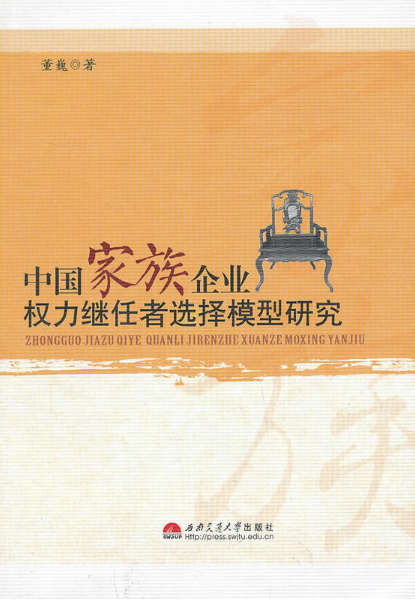-
 中国家族企业权力继任者选择模型研究
中国家族企业权力继任者选择模型研究作者:董巍
本书立足于中国家族企业存在的特点环境和文化影响,以闽南地区家族企业为研究样本,通过实地调查研究与理论研究相结合的方法,建立了家族企业全力继任者选择模型,为企业创始人有的放矢地培养潜在继任者提供了依据。
-
 做成做优:西南交通大学第四届机关优秀工作案例集
做成做优:西南交通大学第四届机关优秀工作案例集作者:王顺洪
高校机关是高校管理的核心组成,促进高校机关工作能力建设,是促进高校事业快速发展,促进和谐校园的建设,促进人才培养的内在条件。如何不断提升机关管理工作水平这一重要的高校“软实力”,是国内外高校普遍面临的一个重要课题。本案例集通过西南交通大学组织机关工作人员参与创新奖、质量奖、服务奖、育人奖、合作奖等奖项的评选,探索如何有效提高机关各部门及其工作人员的工作积极性,激励机关各部门及其工作人员更好地总结在创新工作思路、提高工作质量、提升服务水平等方面的经验,扎实推进学习型、创新型、服务型、廉洁型、效能型机关建设。
-
 现代学校制度新论
现代学校制度新论作者:罗生全, 敬仕勇
现代学校制度是在市场经济条件下为适应市场竞争的需要而建立的新型学校制度。本书以学校法人制度为主体,以有限责任制度为核心,以教育管理专家经营为表征来阐述现代学校制度。
图书分类
Book classification- 本书是一本研究隐喻的学术专著,正文语种为英语。艾米莉·狄金森的诗歌作品一向以独特的隐喻著称,本书主要介绍了隐喻的四大构成种类,对艾米莉·狄金森作品中疯狂隐喻、爱情隐喻和死亡隐喻三种典型隐喻进行了剖析解读,阐释了其诗歌中大量隐喻的运作机制,并对其诗歌中的隐喻和转喻进行了对比分析。本书探讨艾米莉·狄金森如何运用自己独特的不同于传统的隐喻来创造奇特的想象和意象,阐明其隐喻的生成和理解,具有理论参考意义。
- Emily Dickinson was born in Amherst, Massachusetts, on December 10, 1830, into a financially comfortable, but emotionally stern, New England family. She was well educated, but seldom travelled beyond ...查看更多
-
Chapter 1 Four Forms of Metaphor in the Poetry of
Emily Dickinson 1
1.1 Form A Metaphor: Vehicle and Tenor Stated 5
1.2 Form B Metaphor: Tenor Stated, Vehicle Implied 11
1.3 Form C...查看更多





